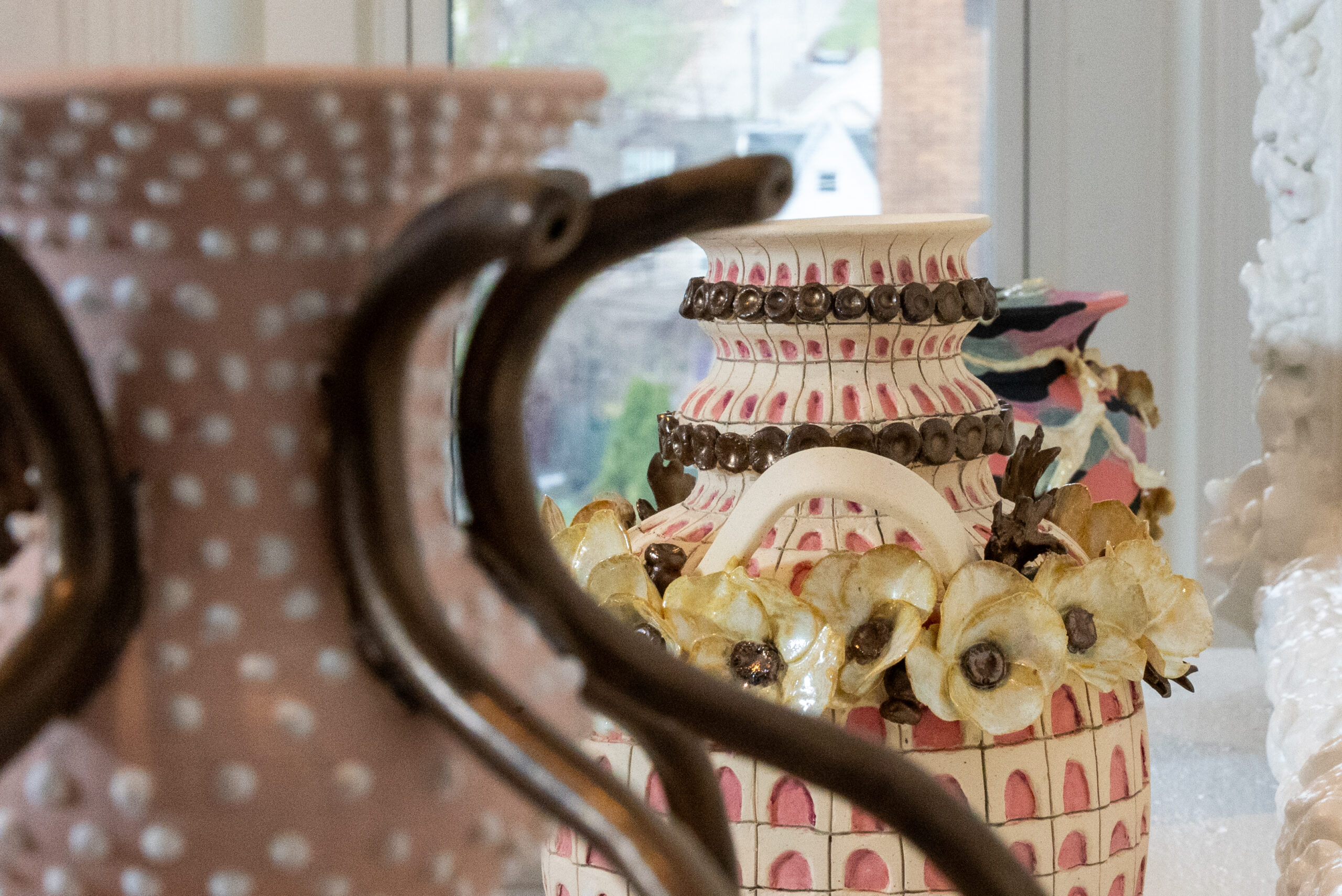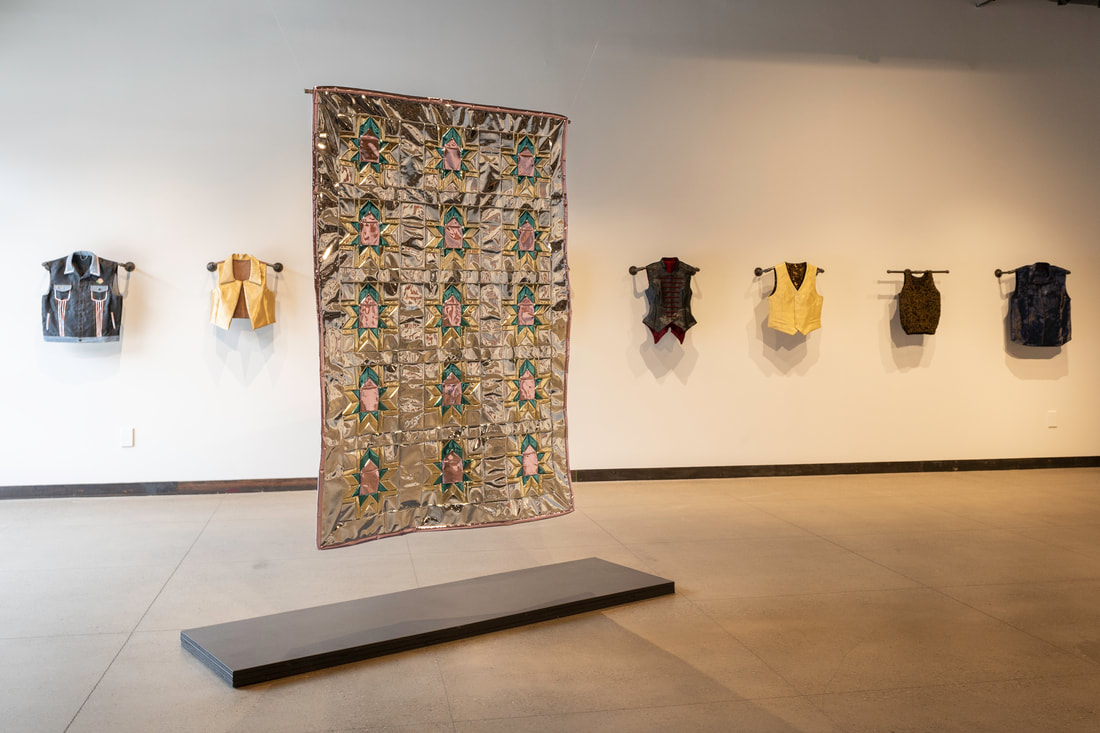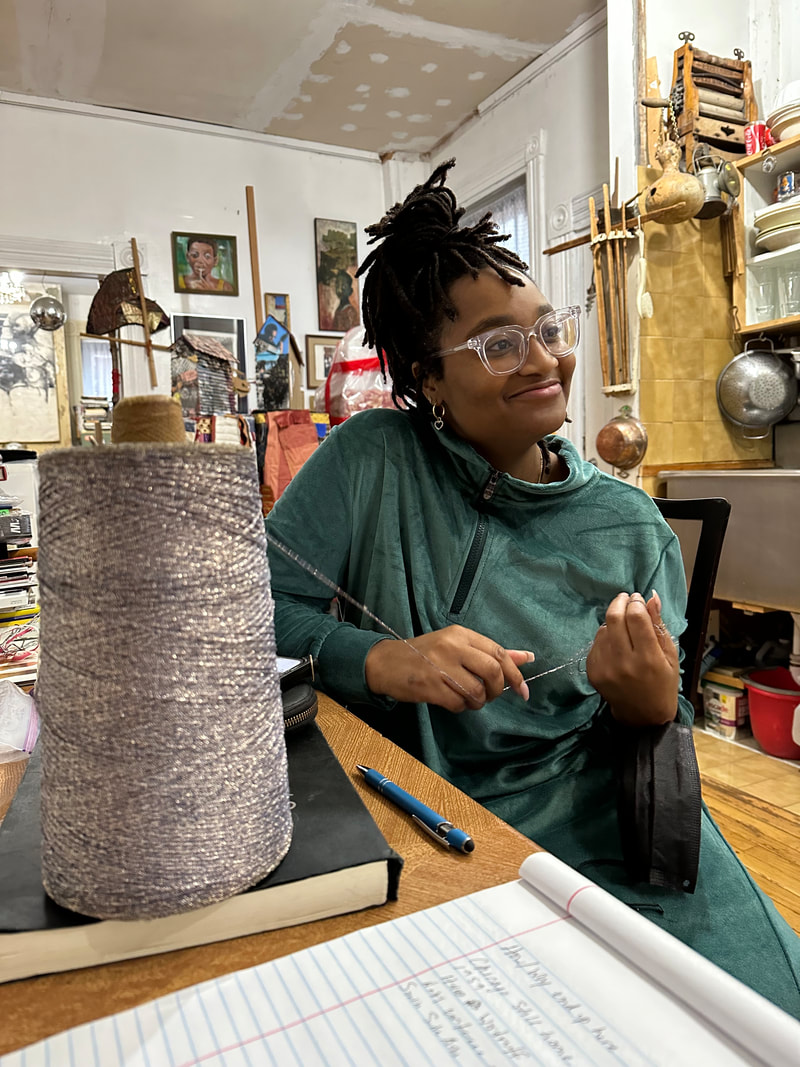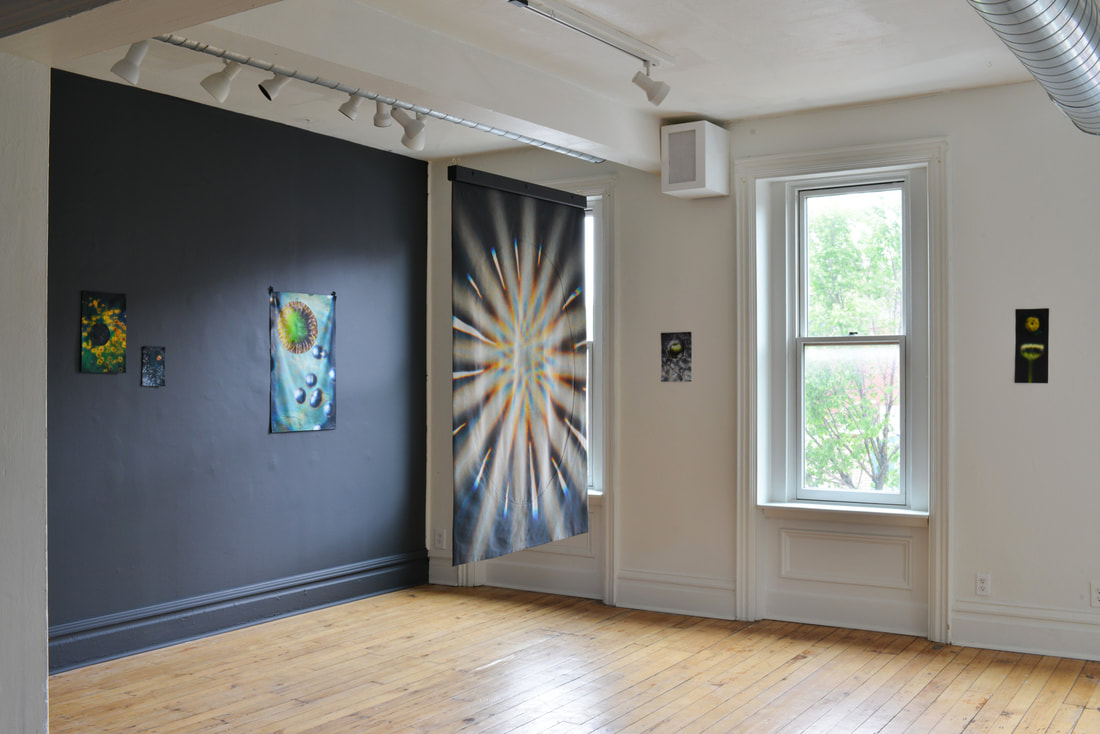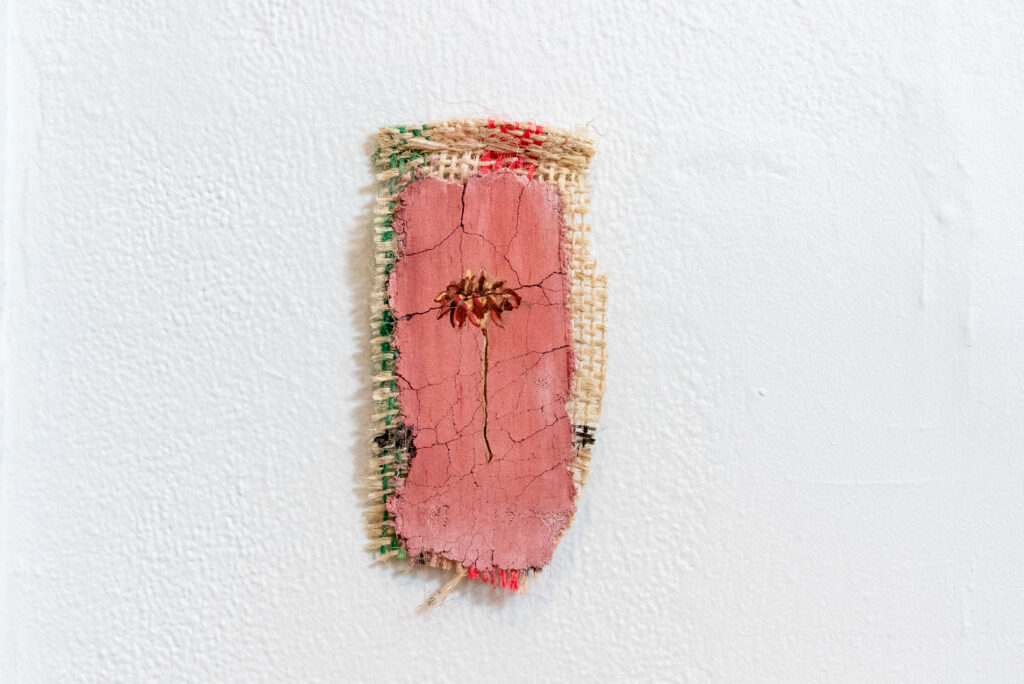
Pittsburgh verges on full spring as I write this, and though the days remain cold, there’s a bustle under everything, a concentrated possibility. As the world reawakens, those in power work tirelessly toward immiseration and oppression, and floral metaphors that gesture at resistance, resilience, and resourcefulness come naturally. But it is easy to feel tired—I am not mugwort blooming in a patch of abandoned asphalt. I am a queer person living in contested times, under the jurisdiction of a government that is grabbing dissidents off the street, intent on striking out markers of sexual, racial, and gender difference. So I approached Floral Methods, a group show curated for Bunker Projects by Théo Bignon, with a question: Are flowers enough for the moment?
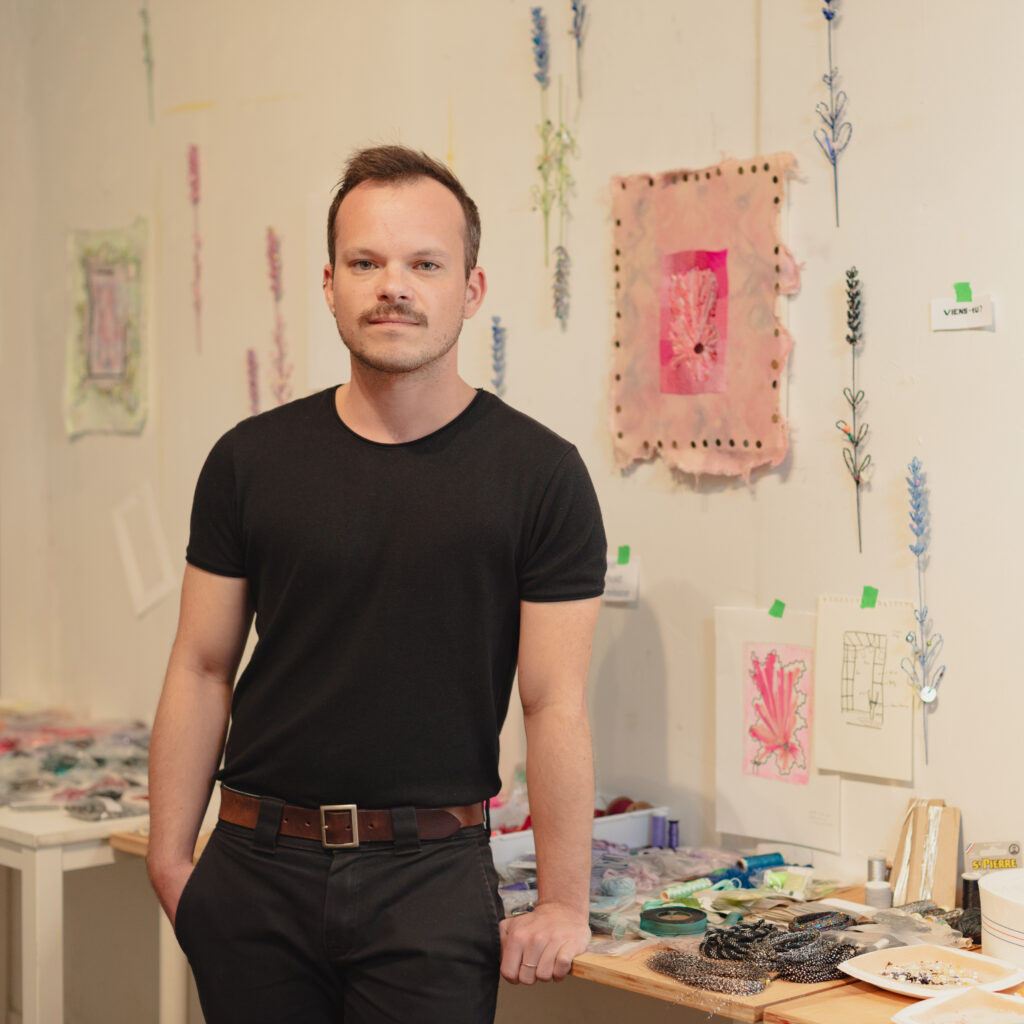
While it might not hold every answer to the present crisis, Floral Methods showcases a polyphonous outpouring of hope and beauty that centers marginalized experiences without flattening them. Shows built around a central motif risk congealing into “’themey-ness,” a palpable sense that the artists involved have narrowed or contorted their work to fit the thème du jour. Bignon avoids this pitfall by tapping 13 artists and community organizers working in myriad media, including collage, weaving, sculpture, ceramics, beadwork, painting, and papercraft, and giving them freedom to respond as they see fit. The resultant gathering spans a full connotative range—flowers as celebration, remembrance, renewal, beautification, and antidote.
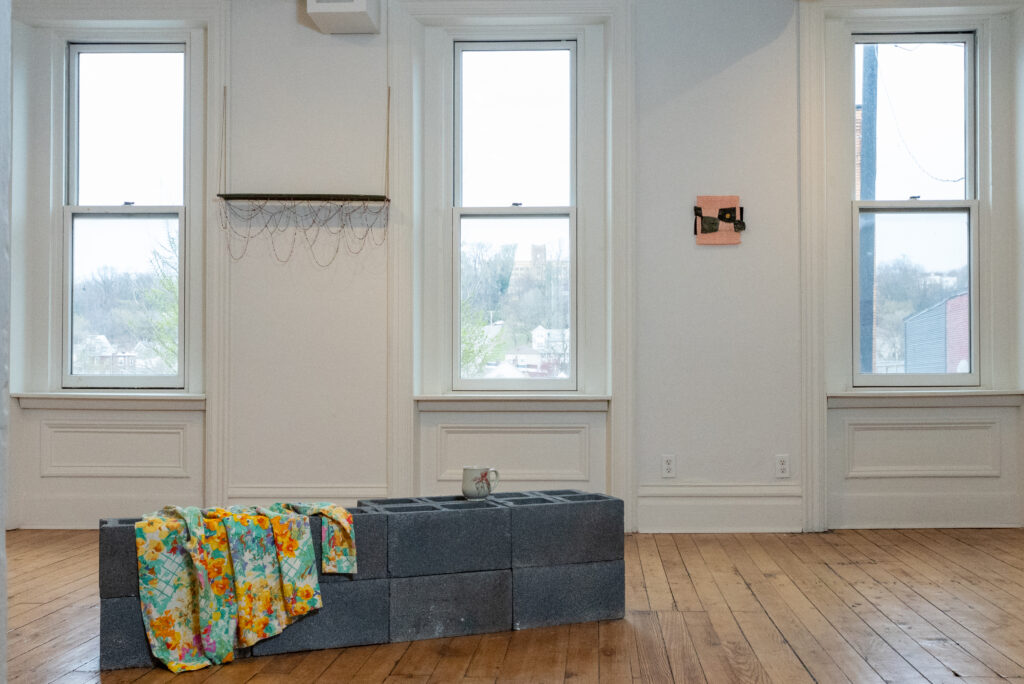
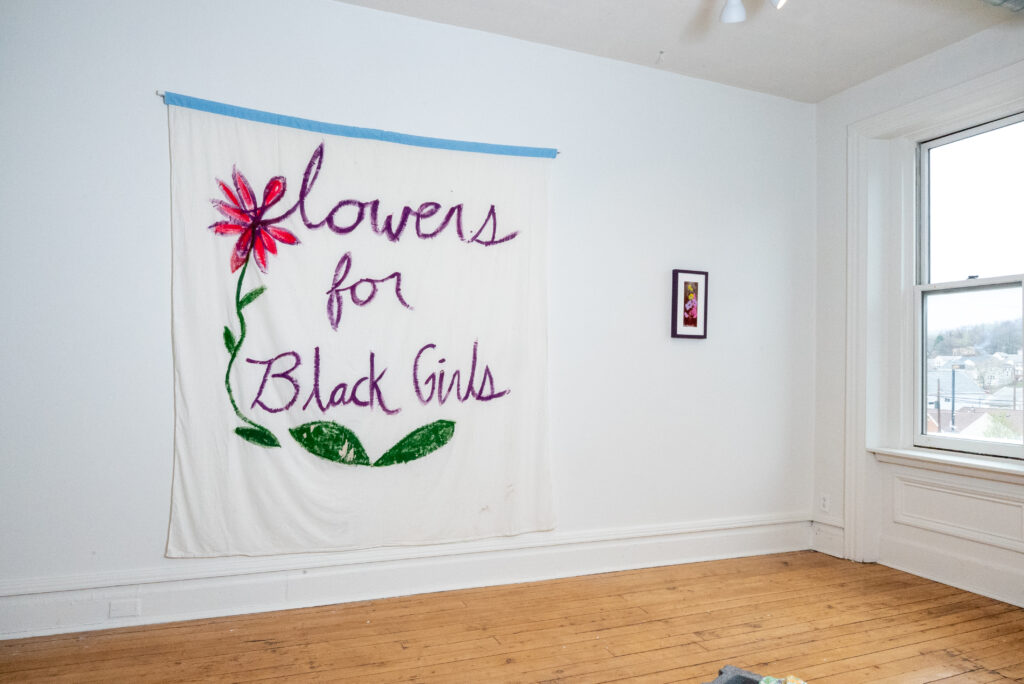
In the center of one room, a group of cinderblocks accentuated with a bold shirt and a mug suggest drowsing on a wall in a day just warm enough, the chance to rest, reflect, and converse with friends. I want to sit there in imagined sunlight, but settle for the blank brick of the fireplace as I study the show. I scan the room. Beads drip from a heddle—a loom component—like glam stalactites, while a banner emblazoned “Flowers for Black Girls” in gestural magenta pays tribute to the life of Teaira Whitehead, the local teenager whose bleach-burned body was found in Riverview Park in 2014. Above my head, the mantle beams with vases, dotted, ridged, rosy. The fresco beside me could have been excised from an abandoned Pittsburgh home as an archaeologist’s record of wallpaper trends. In the corner, we get conceptual, as the viewer is invited into a speculative herbalism, imagining new plant species that could salve the wounds of the present. It makes me feel like a queer apothecary.
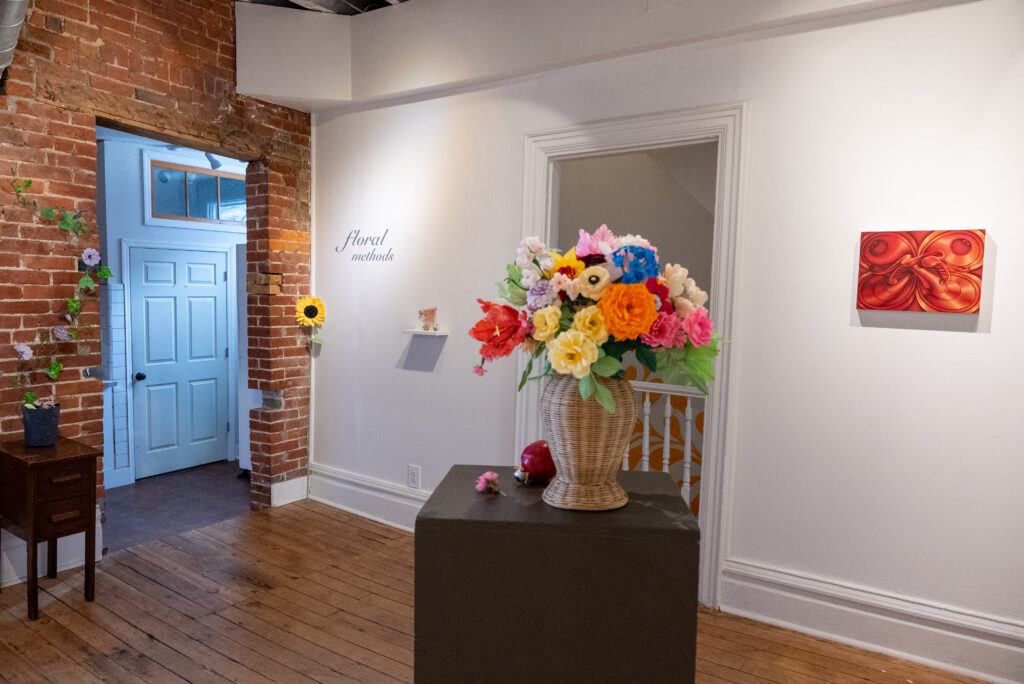
As I move into the second room, the immediacy of a bouquet bursting from a wicker vase reveals itself as intricate papercraft. Then quick impressions unfold the senses—confusion of petals, garden edges abut, jaunting down the mountain with a Jansport full of flowers, a watch band ensnared in a lavender weave, ample organic forms in pomegranate hue. Twining stems question the rigidity of brickwork beside a reading corner, where I sit and watch the crowd. Tonight’s theme extends into wardrobes, and floral prints, brooches, and earrings abound, as if the crowd is competing with the artwork for the superlative Most Vibrant.
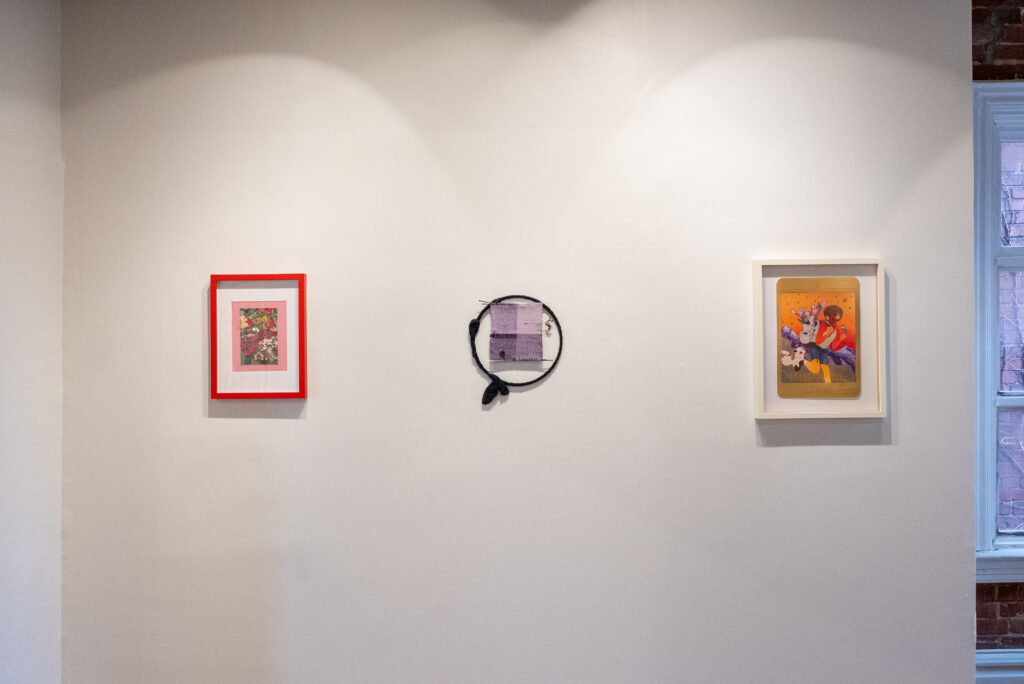
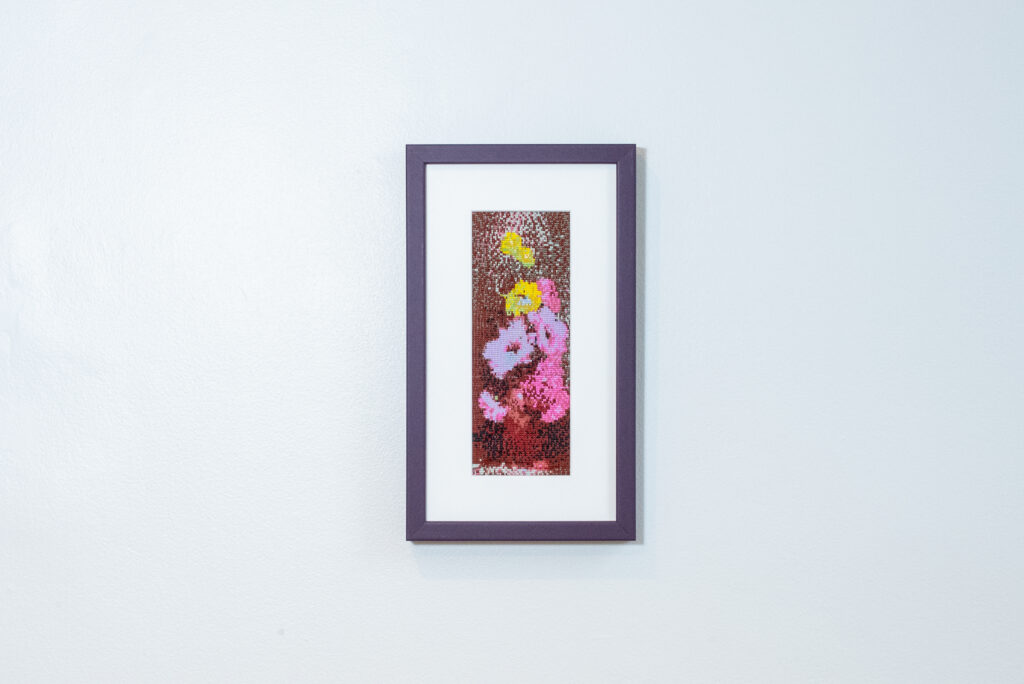
The barrier between craft and fine art that many institutions uphold is not present here. Bignon’s respect for the careful labor of artmaking is evident. These are patient acts, the slow build of muscle memory, the gradual honing of craft, participation in a long lineage of making. Staring at an intricate beaded matrix, I picture the delineation between “art” and “craft,” denaturing until it dissolves completely.
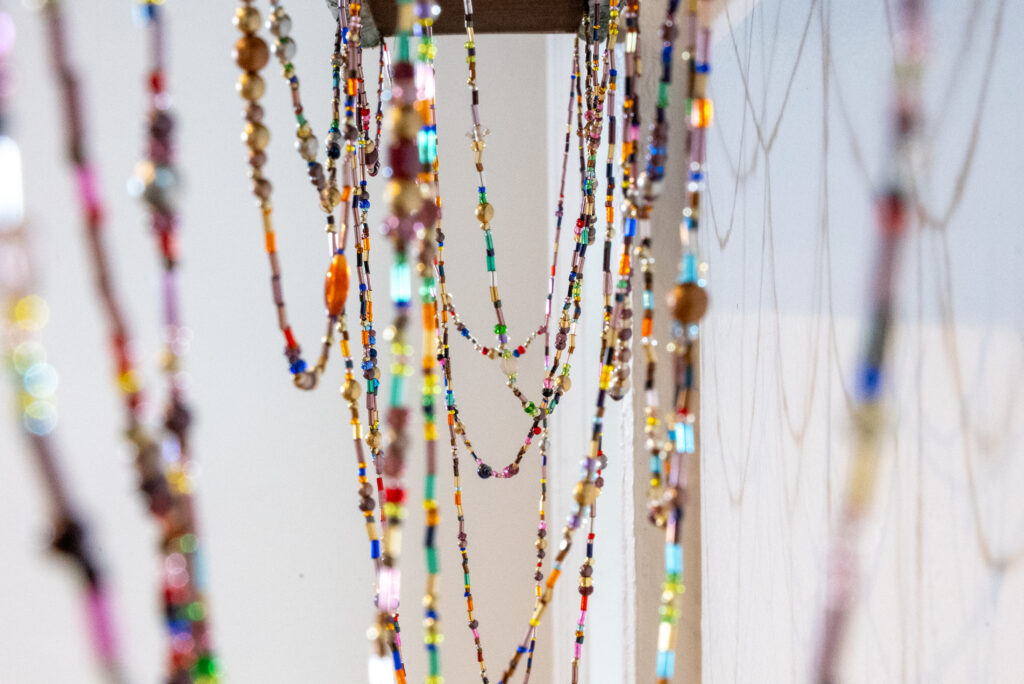
Poets love flowers almost as much as they love the moon, so I turn to my books and push further into the underbrush, where I find June Jordan’s “Letter to the Local Police.” The poem mimics the register of a concerned citizen, notifying law enforcement about “a regular profusion of certain/unidentified roses, growing to no discernible purpose,/and according to no perceptible control.” Existing in “perpetual near riot,” these roses “do not demonstrate the least inclination/toward categorization.” Confronted with a flourishing that no taxonomy can account for, confused by an effort without profit motive, the speaker of the poem retreats into the safety of law and order, requesting an “appropriate legal response to the roses in question.” Despite human attempts to curtail, classify, and condemn the full range of human expression, the field remains open, tangled, alive.
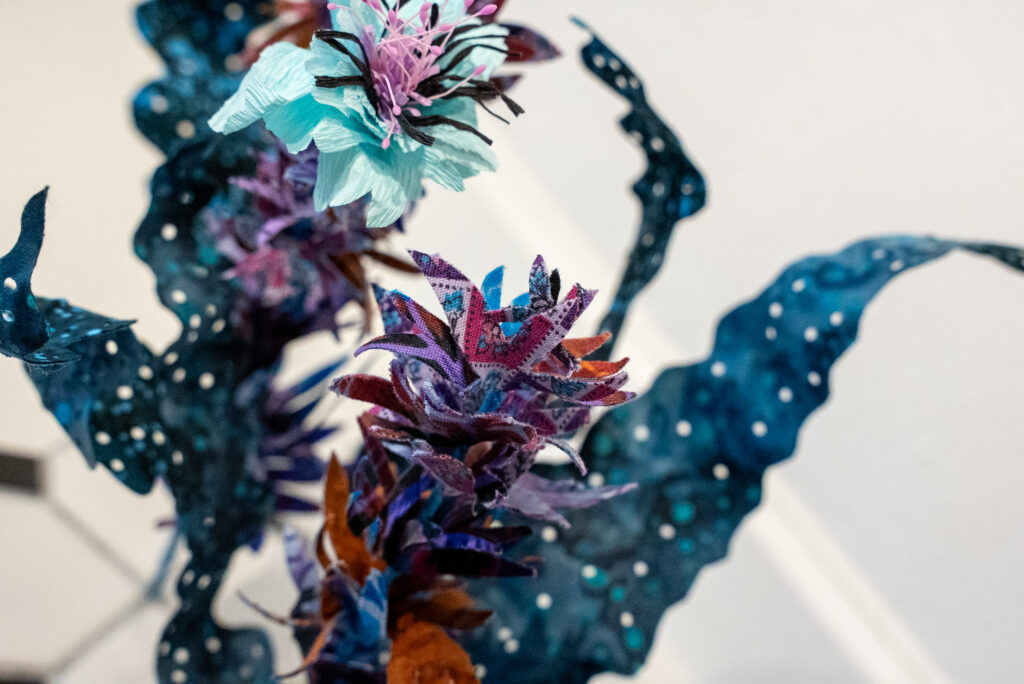
No flower grows alone. The world spills over, runs wild with our blooming, because of a communal act, the vibrance of contrast and interchange. We are not here to be taxonomized, turned against each other, or trifled with. Lucille Clifton: “here we are/flourishing for the field/and the name of the place/ is Love.”1 The field is in front of us, and it is up to us what happens to it.
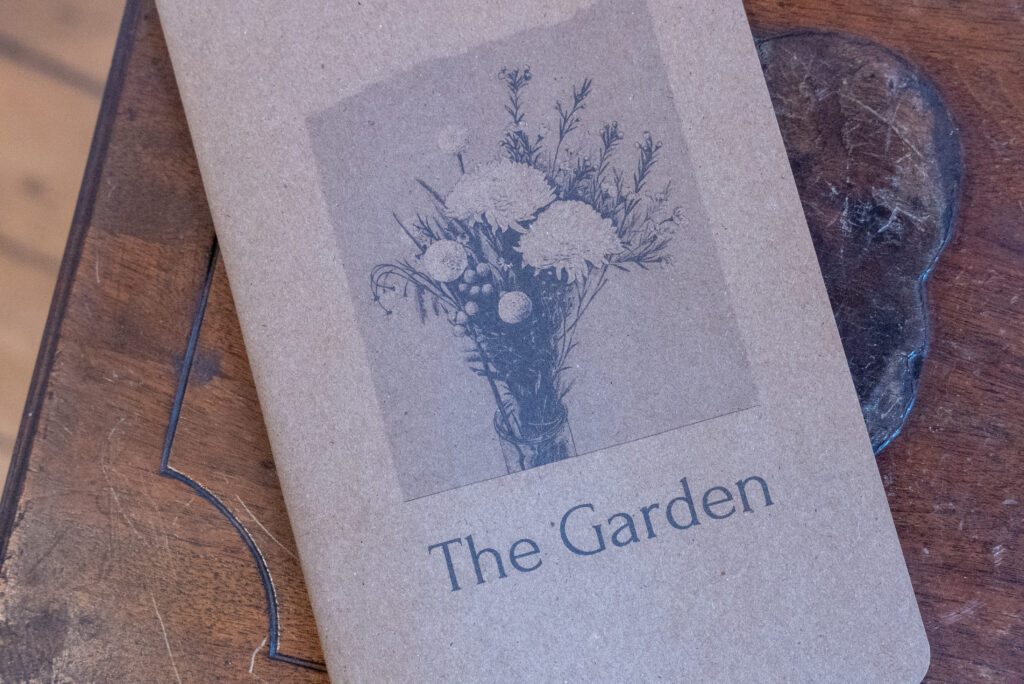
So, what to do? Press so many petals in your dictionary the spine splits in two. Crane your neck to the sun. Grace your living and your dead with flowers. Etch a burgeoning thing onto the nearest surface. Buy beads in bulk for the fun of it. Gather fragments of the world and turn them into something beautiful. Study up on the erotics of pollen. Create a space where rest enables resistance. Practice photosynthesis. Push through the cracks in a border wall. Sit on a ledge and blossom in full view of the world. Avoid the easy “bloom where you’re planted” platitudes and take a lesson from Floral Methods.
Floral Methods is on view at Bunker Projects through May 18, 2025.
Notes:
1. Lucille Clifton, “flowers.”
Exhibition photography by Anna Brewer Productions
Izzy Knapp is a writer and artist from the Midwest. Their most recent work is To the Outward Flowering You Made of Me, a poem for four speakers. They hold an MA in English and an MFA in poetry. You can find them online @afternoonknapp
